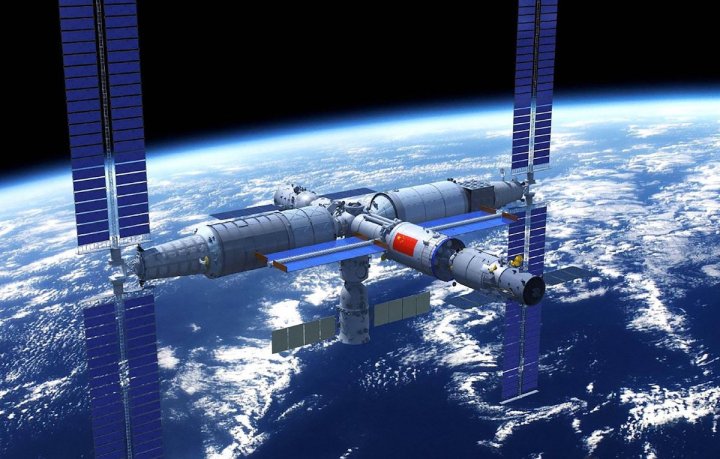
The International Space Station (ISS) is no longer the only habitable satellite orbiting Earth after China successfully launched its own station on Wednesday, April 28.
A Long March-5B rocket carrying the new station’s main Tianhe module launched from the Wenchang Spacecraft Launch Site in Hainan Province at just after 11:20 p.m. ET.
State TV broadcast live footage of the launch and deployment, along with the jubilant scenes that erupted at Mission Control in Beijing when the module entered orbit. You can watch the coverage below.
Weighing 22 tons and about the size of a five-story building, the station will be able to accommodate up to six astronauts. The first three inhabitants could arrive as early as June this year, with a separate cargo mission heading to the station before that, in May.
When China finishes building out its space station sometime next year, it’s expected to be around a quarter of the size of the International Space Station. Like the ISS, the new orbiting outpost will be used to carry out scientific research in microgravity conditions, among other activities. China’s station will orbit around 230 miles above Earth, with the ISS positioned 20 miles higher.
China, which has no links to the ISS, says it plans to share the facilities of its space station with other countries. The new facility is expected to remain operational for at least 10 years. This means it’s all set to outlast the 20-year-old ISS, which may be decommissioned in 2028 or soon after.
This isn’t the first time China has put a habitable satellite in space. In the last decade, it sent up two prototypes, Tiangong 1 and Tiangong 2. The stations received visits from Chinese astronauts, though both satellites have since ended operations, burning up in Earth’s atmosphere in 2018 and 2019, respectively.
In a message to the nation addressing its latest space mission, President Xi Jinping said: “The successful launch of the Tianhe core module indicates that the construction of our country’s space station has entered the stage of full implementation and laid a solid foundation for subsequent missions.”
China’s growing interest in space missions is part of the nation’s ongoing efforts to stand out on the world stage and further cement its reputation as a serious competitor to the U.S., among others.
The China National Space Administration last year launched a mission to Mars that reached the red planet in February 2021, and it also completed a mission to the moon that successfully returned lunar rocks to Earth.


